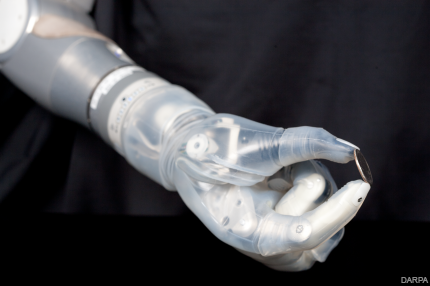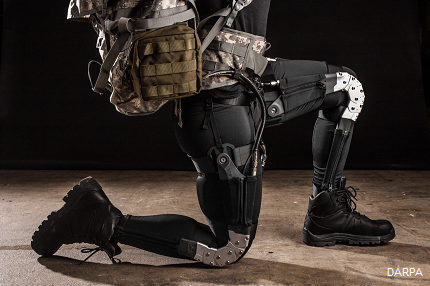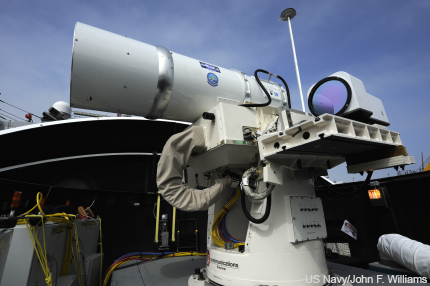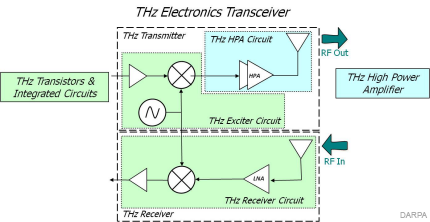7 breakthrough technologies from 2014
These DOD technologies and projects started making the transition this year from research to reality.
Military research labs and their contractors are always pushing for technological breakthroughs, with any number of ongoing projects ranging from robotics to wireless communications. Many of those projects involve big ideas and complex technologies, and while they show progress and offer hope for the future, the real benefits remain down the road. But many projects do eventually come to fruition, making all the effort and research funding worth it.
Here, we highlight seven technologies or projects that made a turn onto the home stretch in 2014, proving themselves ready to take the field, a step away from being ready, or ready to serve as the launching pad for other breakthroughs.

Swarm Boats
The military has made use of unmanned vehicles for years, but one of DOD’s goals for the future is to increase their autonomy and ability to work together. The Office of Naval Research achieved a breakthrough this summer with its Control Architecture for Robotic Agent Command and Sensing, or CARACaS, system, which can turn just about any boat into an unmanned vessel. The Navy demonstrated several types of CARACaS-equipped boats working together, both autonomously and by remote control, to escort a Navy ship and them “swarm” and surround an approaching vessel.
Navy puts autonomous 'swarmboats' into action

Robotic prosthetic
Prosthetic arms hadn’t advanced much beyond the split-hook device invented in 1912 until the DEKA Arm System, which received Food and Drug Administration approval in May. About the size and weight of an adult human arm, the device responds to muscle contractions and allows users to do things they couldn’t before, such as handling keys and locks, preparing food and using zippers. Developed by DEKA under a Defense Advanced Research Projects Agency program started in 2005, the arm was code-named “Luke” after a certain movie character who was given a robotic hand.
‘Star Wars’ prosthetic arm gets FDA approval

Soft exosuit
While the military is working on armored, Iron Man-like suits, DARPA’s Warrior Web program is taking exoskeletons in a different direction, with its Soft Exosuit, a light, flexible apparatus that would be worn under the clothes. Developed at Harvard University’s Wyss Institute with DARPA funding can help soldiers carry their loads, reducing fatigue and the risk of musculoskeletal injury, which is the most common reason for discharge from the military. The suit is currently being tried out at the Army Research Lab.
Wearable robot will put a spring in soldiers' steps

Laser weapon
Research into shipboard laser weapons dates to the 1980s, but those early efforts involved chemical lasers that were unwieldy and risky. This year the Navy unveiled a safer solid-state laser, the 30-kilowatt prototype Laser Weapon System. Deployed aboard the USS Ponce in the Persian Gulf, the laser, or directed-energy weapon, can fire warning bursts or destructive beams that can take out UAS and small boats. And each shot costs only a few dollars, fraction of what it costs to fire conventional weapons. The Navy hopes to deploy the laser weapon across the fleet as early as 2017.
Navy deploys first anti-drone laser weapon in Persian Gulf

Record-breaking integrated circuit
It might seem a small thing, but an integrated circuit operating at 1 terahertz, or 1 trillion cycles per second, could really change the game for wireless communications. Northrop Grumman engineers, working under a DARPA program, did just that with the Terahertz Monolithic Integrated Circuit, which received official recognition from Guinness World Records as the world’s fastest chip. Teraherz speed opens the door to a raft of revolutionary possibilities, including high-resolution security imaging, better collision-avoidance radar, super-capacious communications networks and highly sensitive spectroscopy for detecting dangerous chemicals and explosives.
Record-breaking terahertz circuit could open new bands of the spectrum
JRSS goes live
It might not have the whiz-bang appeal of some of the other technologies on this list, but DOD’s march toward the Joint Information Environment took a big leap forward this year at Joint Base San Antonio. The Army, Air Force and the Defense Information Systems Agency successfully demonstrated the first Joint Regional Security Stack, putting Army and Air Force traffic on the same network for the first time. JRSS streamlines traffic, boosts bandwidth and improves security on the network and will eventually allow DOD to cut the number of its security stacks worldwide from about 1,000 to 50. It’s the key to the JIE, which is intended to accommodate all the military services, other DOD components and coalition partners. With the tests completed, the first components will go live in January.
In a first, Army and Air Force share one network at joint base
Mission-planning app
The Navy has wanted to eliminate some of the manual work, and the potential for human error, involved in planning safe routes for missions at sea, which can involve days or even weeks of poring over various charts and maps. This year, the Office of Naval Research’s Mission Planning Application made it to the surface, being installed on the guided-missile cruiser USS Mobile Bay, where it will be refined for use throughout the fleet. Originally developed for submarines—and it is being integrated into the sub fleet as well—the software automates the process of sorting through thousands of chart data to identify potential hazards and plan the safest route, andcuts all that planning time down a matter of hours.
ONR app can cut mission route planning from weeks to hours



